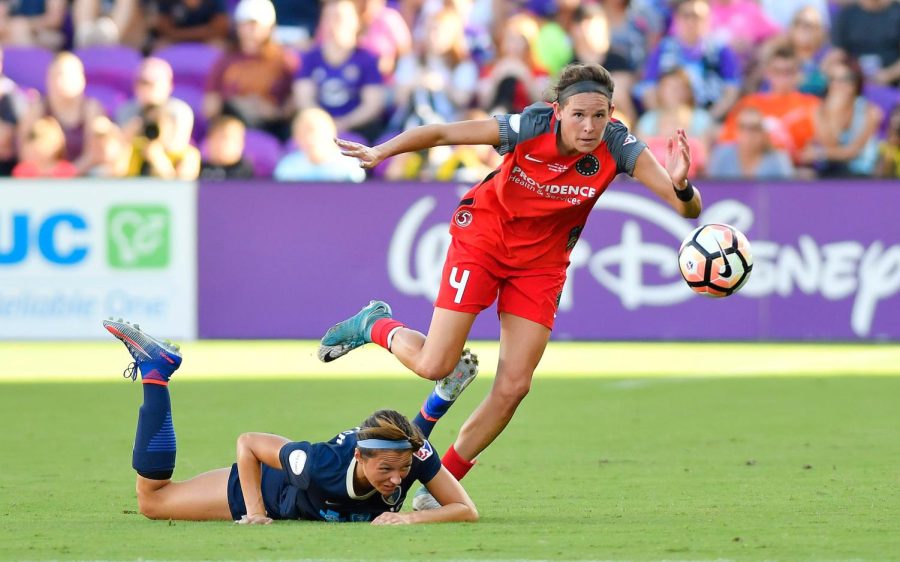Money is the Male’s Assist in Professional Soccer
The history of financial discrimination in professional soccer, state and nation wide.
Preston Mack, Special to The Oregonian/OregonLive
Emily Menges, professional soccer player for the Portland Thorns, in action.
Gender discrimination in the work place is something women face every single day. Women are underpaid compared to their male counterparts in various fields around the world. The U.S. Bureau of labor statistics data shows that in Oregon, women made only 83.5% of what men made over the course of 2020. This data shows the salaries for median usual weekly earnings of full time wage and salary workers. The pay gap also worsens for women of color. For every dollar a non-Hispanic white Oregon man made between 2012 and 2016, Asian women earned $0.80, Black and African women earned $0.66, Native American and Alaska Native women earned $0.62, Native Hawaiian and Pacific Islander women earned $0.60, and Latina women earned just $0.51. Women with higher educations deal with the same discrimination even in high level jobs. Women with Bachelor’s degrees on average make around 80% of what men make that have the same degree.
The gender discrimination regarding pay gap is evident in sports as well. The United States Women’s National Soccer Team makes 27% of what the United States Soccer Men’s National Team makes for winning the same international tournament. The women have won the World Cup four times since it’s inaugural tournament in 1991, whilst the men have not won the World Cup since its start in 1930. Although the men’s team has never been awarded this money due to their losing record, it has been shown that the men get $5,625,000 for advancing in the World Cup, while the women get nothing.
There is gender pay discrimination in the professional soccer leagues within the United States as well. The National Women’s Soccer League has a salary cap for it’s players of $50,000, which is less than the lowest paid player in the Professional Men’s League in the United States (MLS).
“We have better players, comparatively, than the MLS does. The best leagues for the men are like the EPL bonus League, the leagues in Europe. And so, if we are compared to those leagues, but we’re still making less than leagues like the MLS, I mean that there is a huge gender disparity” says Emily Menges, a player for the Portland Thorns.
During the 2019 USWNT training camp ahead of the 2019 World Cup, the women announced that all 23 players on the team would file a discriminatory lawsuit against the US Soccer Federation. Some three months later, the women competed in their first match of the 2019 World Cup, a 13-0 win over Thailand. This amplified the already strong message that the women’s team were, and always have been, deserving of equal pay.
But the US Soccer Federation didn’t see it that way. After the 2019 World Cup was over and the USWNT won, that’s when the real game started. During the mediation process of the lawsuit where the two parties attempted to come to an agreement, the USSF stated that the job of the men’s players requires a higher level of skill so the women didn’t deserve to get paid more.
“Keep pushing the boundaries, and not just monetarily, but you also want to have a voice, and so if you can figure out a way to get yourself a seat at the table for the decisions being made, that’s where the real change is going to happen,” says Menges.
The pay gap between genders is a trend that is present throughout vast workspaces around the world. Women continuously get the short end of the stick because they’re seen as less than men. For this to change women have to fight for equality. The people in power will continue to suppress women, while women have to continue to break the glass ceilings that hold them down.

